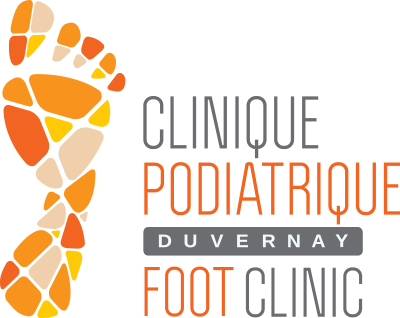Heel spur pain is a distressing condition that affects many people worldwide. This pain originates from heel spurs, small bony growths that develop on the underside of the heel bone. The discomfort experienced can range from a sharp, intermittent pain to a constant and dull ache, making it difficult to carry out daily activities.
Before we delve into the details of this article, it’s important to note that if you’re experiencing symptoms associated with a heel spur and reside in the Laval area, professional help is within your reach. We highly recommend booking an appointment with Clinique podiatrique Duvernay. Their team of medical professionals specializes in conditions related to the foot, providing expert diagnosis and treatment options tailored to individual needs. Ensuring the health of your feet is their priority. Now, let’s explore heel spur pain in detail.
What are Heel Spurs?
Heel spurs are calcified growths on the heel bone, often developing as a result of prolonged strain on the foot. They can be viewed on an X-ray as protrusions extending from the heel bone, sometimes up to half an inch. While these spurs are not always painful, they can cause significant heel spur pain when they press or rub against soft, delicate tissues in the foot.
The Relationship Between Heel Spur Pain and Plantar Fasciitis
Heel spur pain is frequently associated with another foot condition known as plantar fasciitis. The plantar fascia is a thick band of tissue that connects the heel bone to the toes. When this tissue becomes inflamed due to excessive strain, it leads to plantar fasciitis, often accompanied by heel spur pain. However, it is crucial to understand that not everyone with plantar fasciitis develops heel spurs and vice versa.
What Causes Heel Spurs?
Understanding what causes heel spurs is integral to their prevention and treatment. Heel spurs often result from long-term muscle and ligament strain. The stress damages the soft tissue surrounding the heel, leading to the body’s defensive mechanism of growing extra bone in a bid to protect this region.
Risk factors contributing to what causes heel spurs include age, obesity, poorly fitting shoes, running and jogging on hard surfaces, and conditions like flat feet or high arches.
Recognizing the Symptoms of Heel Spur Pain
Symptoms of heel spur pain can vary among individuals. The most common symptom is a sharp pain in the heel when taking the first steps in the morning or after a long rest. As the foot warms up, the pain often decreases, but it may return after prolonged periods of standing or when rising from a seated position.
Other symptoms may include a dull ache in the heel, inflammation, and warmth in the affected area. These symptoms mimic other foot disorders, making it essential to seek medical advice to get an accurate diagnosis and appropriate treatment for heel spur pain.
For individuals experiencing symptoms of heel spur pain, it is highly recommended to seek the expertise of a podiatrist. The manifestation of heel spur pain can vary among individuals, with the most prevalent symptom being a sharp pain in the heel during initial steps taken in the morning or after a prolonged period of rest. While the pain often subsides as the foot becomes more active, it may resurface after extended periods of standing or when transitioning from a seated position.
Diagnosing Heel Spur Pain
Diagnosing heel spur pain typically involves a physical examination and a review of the patient’s medical history. A healthcare provider may perform a foot examination to check for tender areas, signs of swelling, and the range of motion. Imaging tests like X-rays or magnetic resonance imaging (MRI) can help visualize the heel spur.
Treating Heel Spur Pain
The treatment for heel spur pain primarily aims to relieve the symptoms, improve mobility, and prevent further damage. Home remedies such as rest, ice, over-the-counter pain relievers, and exercises can alleviate mild heel spur pain. Wearing proper footwear and using shoe inserts can provide additional support and cushioning to the heel, reducing the pressure and easing the pain.
In some cases, physical therapy may be recommended to strengthen the muscles and ligaments in the foot, alleviating the strain that causes heel spurs. If conservative treatments fail to relieve heel spur pain, a healthcare provider may suggest more advanced treatments such as corticosteroid injections or even surgery.
In conclusion, heel spur pain, while often associated with plantar fasciitis, is a distinct condition with its own set of causes and treatments. Recognizing the symptoms and understanding what causes heel spurs are the first steps towards effective treatment. Whether through home remedies or medical interventions, it is possible to manage heel spur pain and regain a normal, active life.
